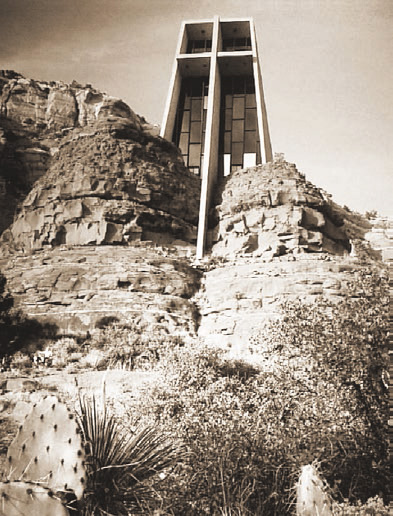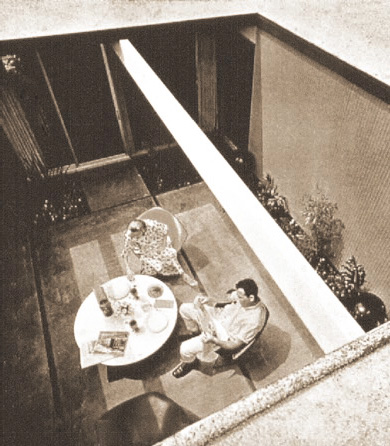It Starts with a Spark - Page 3
 |
Asked about his intellectual and cultural interests in high school, Jones said he had none. “[Subject] had few interests outside of basketball and outboard motorboat racing. In 1929-‘30 he set two world records.”
The interviewer, who described Jones as obese, evinced surprise that Jones described himself as a good baseball and basketball player.
Anshen, on the other hand, expressed no interest in exercise or sport. “I swim a little bit, and I used to play tennis and ice skate a little bit,” he said, but that was about it.
Do unhappy childhoods, or interest or lack thereof in sex contribute to creativity in architects? Unclear.
But how about chance? Anshen thought so—but only if the architect was quick to take advantage of it.
Anshen and Allen met as architecture students at the University of Pennsylvania in the mid-1930s. They were fast friends, toured the world together on fellowships after graduation, and formed a partnership that Anshen described as tight.
“I might say that most partnerships are divided, and one person is a businessman or this and that. But we have no such divisions, and we make joint decisions all of the time,” Anshen said.
 |
“And sometimes, when it’s impossible to make a decision that pleases both of us, we flip a coin.”
It was chance that put Anshen and Allen in San Francisco—and thus led to Eichler’s eventual decision to hire architects to design his homes. Hiring real architects was a suggestion that came from Anshen, one Joe initially resisted. It was the decision that made Eichler Homes a phenomenon.
Anshen and Allen ended up in San Francisco not by plan but because of excessive drinking. It was the final leg of their 1937 round-the-world tour, which had taken them to Japan.
“When we came back here into San Francisco, the steamship line kept our baggage because we had too big a bar bill and couldn’t pay it,” Anshen said. The two architects had to raise funds to reclaim the bags, so took jobs with other architects.
“We were forced to stay here,” Anshen said.
Anshen’s and Jones’ personalities, and, perhaps one might say, the holes in their personalities, may also tell us why some architects are deeply creative. Both architects came across to the psychologists, and described themselves, as obsessed with architecture.
While seeing in Jones “sincerity and trustworthiness”—noting the feeling “that he would be kind and generous to others even if this meant that he would have to do without”—the psychologist studying Jones describes a man who “seems more occupied or preoccupied with his architecture than with familial or social relations.”
 |
“In addition to pleasure at aesthetic solutions to problems, [subject] stressed social responsibility, [and] how architecture can make a ‘person work more effectively with proper office design,’ how a community can be influenced and be a ‘better place for people,’” the scientist wrote.
Asked about the “best work you have done,” Jones had a single answer, Eichler’s Greenmeadow subdivision in Palo Alto, “because it is a solution to a problem of a complete community.”
“It influenced also the builder,” the investigator summarized. “It was a better place for people,” Jones said.
The interviewer asked how the layout of Greenmeadow occurred to Jones, and summarized the answer: “There were a number of city restrictions, as well as irregular lots, and it occurred to [subject] that he could do things on a smaller scale if he started all over. So he reworked the map, reduced the lot size, and actually created land for a community park, pool, commercial center.”
In college, Anshen said, he had one interest, “Architecture only.”
Neither Jones, who had three children, nor Anshen, who became father to two boys when he married their mother, was a hands-on parent. How much time do you spend with your family, Mr. Jones?
“Not enough.”




